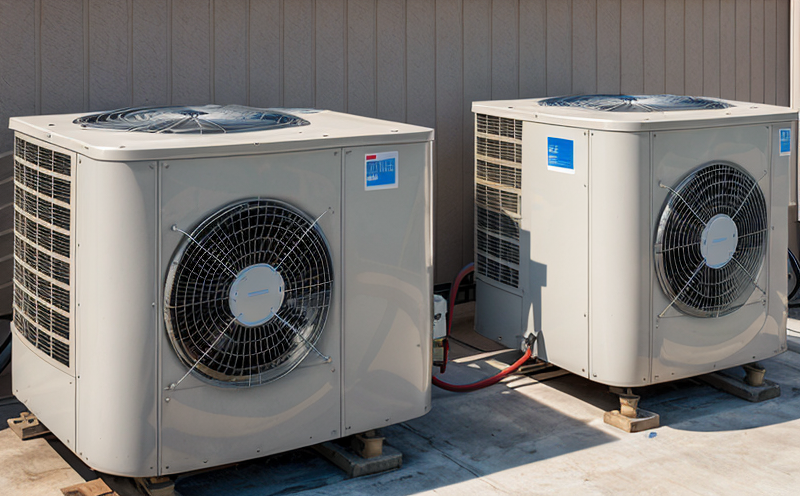EN 15232-2 Building Automation Control Strategy Assessment
The EN 15232 series of standards is designed to ensure that building automation and control systems are installed correctly, operate as intended, and contribute effectively to the overall performance of buildings. Specifically, EN 15232-2 focuses on assessing the Building Automation Control Strategy (BACS). This assessment ensures that the control system's strategy aligns with the building’s functional requirements, energy efficiency goals, and compliance needs.
The BACS is a critical component in modern HVAC systems. It governs how different subsystems interact to achieve optimal performance. Properly implemented, it can significantly reduce energy consumption and improve occupant comfort by ensuring that heating, cooling, ventilation, and other processes are efficiently managed according to real-time conditions.
The testing procedure outlined in EN 15232-2 involves several key steps:
- Review of the control strategy documentation provided by the system designer or manufacturer.
- Verification that the implemented controls match the documented strategy.
- Evaluation of how well the controls function under various operating conditions to ensure they meet the specified performance criteria.
This assessment is particularly important for large and complex buildings where multiple systems need to work together seamlessly. Proper implementation ensures that all components are integrated effectively, leading to better operational efficiency and reduced maintenance costs.
The test parameters include monitoring and adjusting variables such as temperature, humidity levels, air flow rates, and energy consumption. Specimen preparation involves simulating real-world conditions in the laboratory environment using controlled inputs and outputs. Instrumentation plays a crucial role here by providing accurate measurements of these parameters during testing.
Upon completion of the assessment, detailed reports are generated that outline findings related to compliance with relevant standards like EN 15232-2 and any deviations from expected performance levels. These reports serve not only as evidence of adherence to regulatory requirements but also provide insights into potential areas for improvement.
In summary, conducting an EN 15232-2 assessment helps organizations ensure that their building automation systems are operating optimally towards achieving sustainability targets while maintaining high standards of comfort and safety within the premises.
Why It Matters
The importance of EN 15232-2 cannot be overstated, especially for organizations seeking to enhance their environmental footprint through more efficient HVAC operations. By ensuring that the BACS is correctly implemented and functioning as intended, businesses can achieve significant reductions in energy consumption without compromising on occupant comfort or safety.
For quality managers and compliance officers, this assessment provides peace of mind knowing they are meeting all necessary regulatory requirements while potentially lowering operational costs through improved efficiency. R&D engineers benefit greatly from such assessments too as it allows them to fine-tune their designs based on actual performance data rather than theoretical calculations alone.
From a broader perspective, organizations that invest in comprehensive EN 15232-2 assessments are contributing positively towards global efforts aimed at reducing carbon emissions and promoting sustainable practices. Smart HVAC systems play an integral part in this initiative by enabling buildings to adapt dynamically based on external factors like weather patterns or internal occupancy levels.
To illustrate the impact, consider a large office building where implementing EN 15232-2 compliant strategies could result in savings of up to 20% on heating and cooling costs annually. Such reductions not only translate into direct financial benefits but also contribute significantly towards achieving broader corporate sustainability goals.
In conclusion, embracing this standard is essential for any organization looking to optimize its HVAC systems for both efficiency and effectiveness while aligning with current best practices in building automation control strategies.
Applied Standards
The application of EN 15232-2 is guided by several internationally recognized standards that collectively form the foundation upon which this assessment rests. These include:
- ISO/IEC 17025: Ensures the competence and capability of laboratories performing testing activities.
- EN 15231-6: Provides guidelines for energy management systems in buildings, which complement the objectives set forth by EN 15232-2 regarding control strategies.
- ASHRAE Standard 90.1: Sets minimum criteria for energy efficiency of buildings, ensuring that HVAC systems are designed to operate within specified limits.
By adhering strictly to these standards during the assessment process, laboratories ensure accuracy, consistency, and reliability across all tests conducted under EN 15232-2. This alignment with globally recognized benchmarks adds credibility to the results obtained from this type of evaluation.





